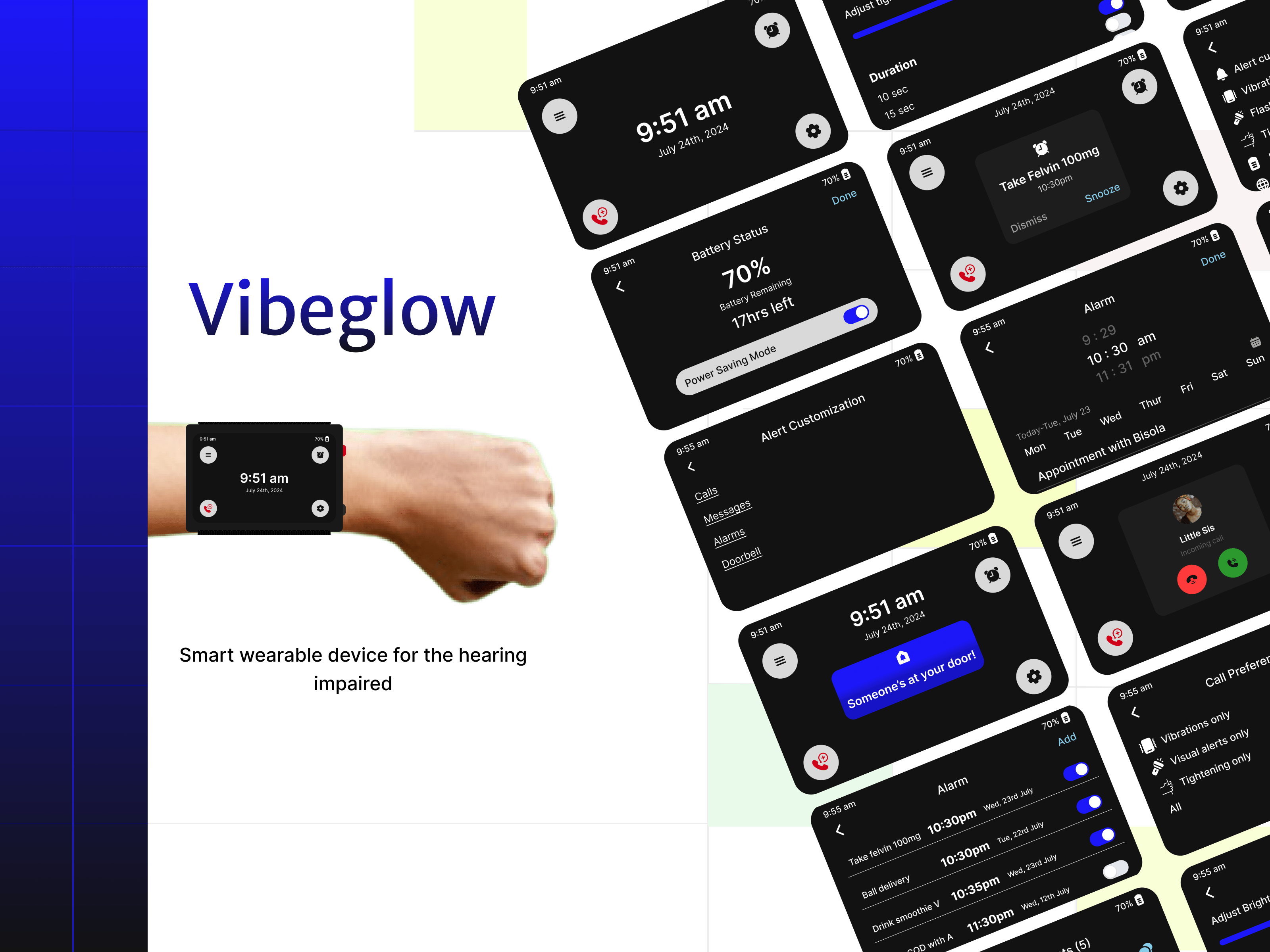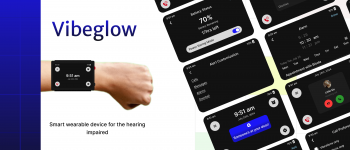VibeGlow is a smart wearable device designed to bridge the gap in accessibility for hearing-impaired users by providing both visual and tactile notifications. The project was conceived as part of a design challenge focused on inclusivity, and aims to address the issue of missed notifications, which is a common problem among hearing-impaired individuals. Vibeglow uses LED light indicators, tightening and vibration feedback to alert users to important events such as phone calls, messages, and doorbell rings.
The device’s clean, modern design focuses on simplicity and user comfort, ensuring that it can seamlessly fit into the daily lives of its users. By incorporating features like adjustable notification settings and two color modes, Vibeglow empowers users to customize their experience based on their specific needs. The wristband, which features a tightening mechanism for tactile alerts, offers a more intuitive and personalized solution compared to traditional notification devices.
Through research, user personas, and iterative design, Vibeglow was developed to cater specifically to the needs of the hearing-impaired community, providing a more inclusive, reliable, and personalized approach to notifications.
Building on these insights, I designed Vibeglow, a smart band that integrates visual cues through LED lights and tactile alerts using vibrations and a tightening feature (which works like a blood pressure machine cuff) to notify users of calls, messages, and other important alerts. By focusing on accessibility, simplicity, and user comfort, I crafted a solution that empowers the hearing-impaired community. The design process involved brainstorming, sketching, and refining the idea, with the goal of creating a device that could be easily integrated into users' daily lives. The final product, Vibeglow, provides an intuitive interface that enables users to stay connected and informed without relying on auditory alerts.
For a more detailed view of my design process, including sketches, and iterative design decisions, please read my Medium article[https://medium.com/@mariamomiteru/designing-vibeglow-a-smart-wristband-for-hearing-impaired-users-aab4691e6787]
The Secondary Stakeholders would be; Potential investors who can provide financial backing to scale Vibeglow and NGOs who can validate the design and help it reach those in need.



 Vibeglow (Beopen).pdf
Vibeglow (Beopen).pdf